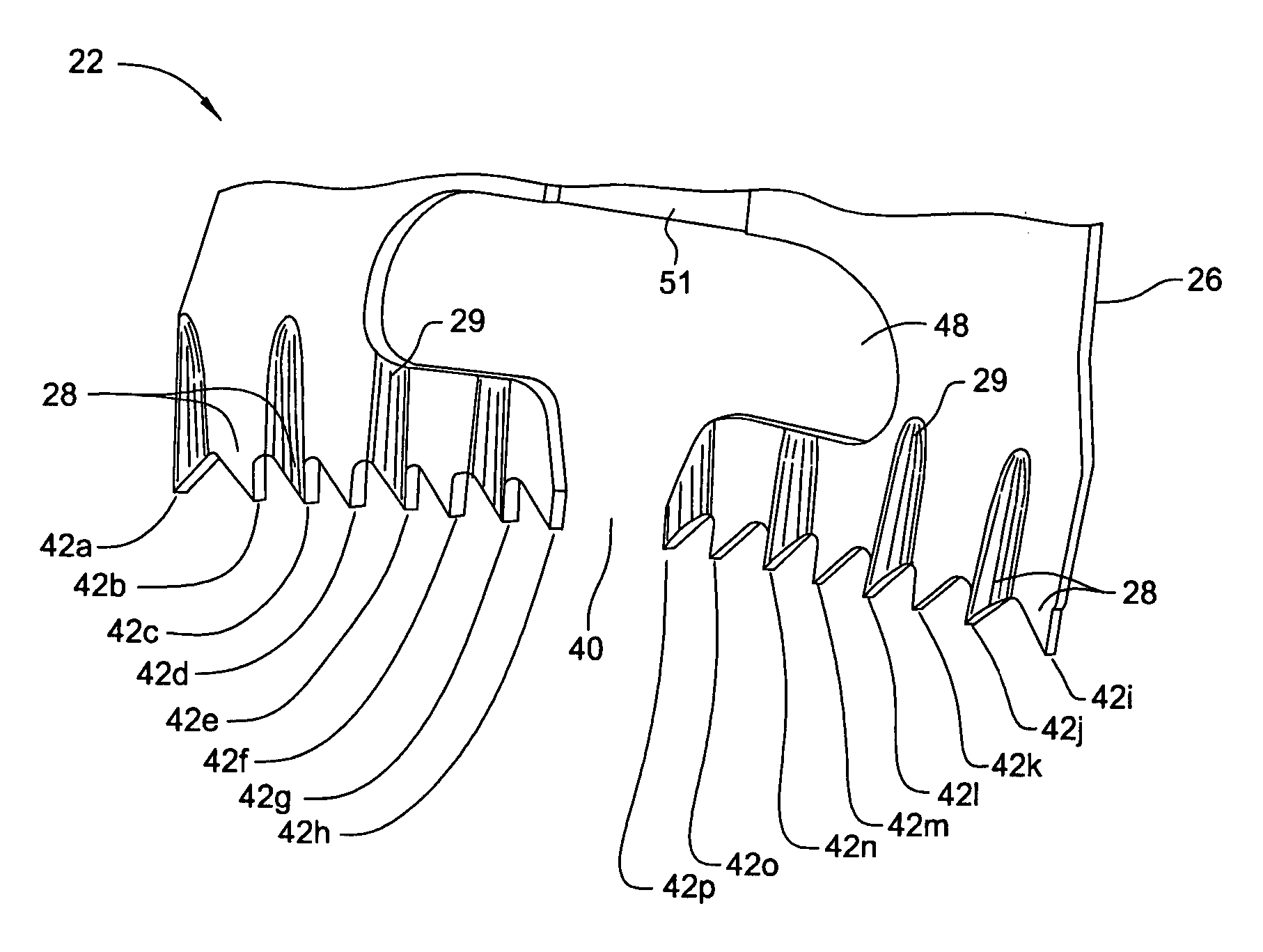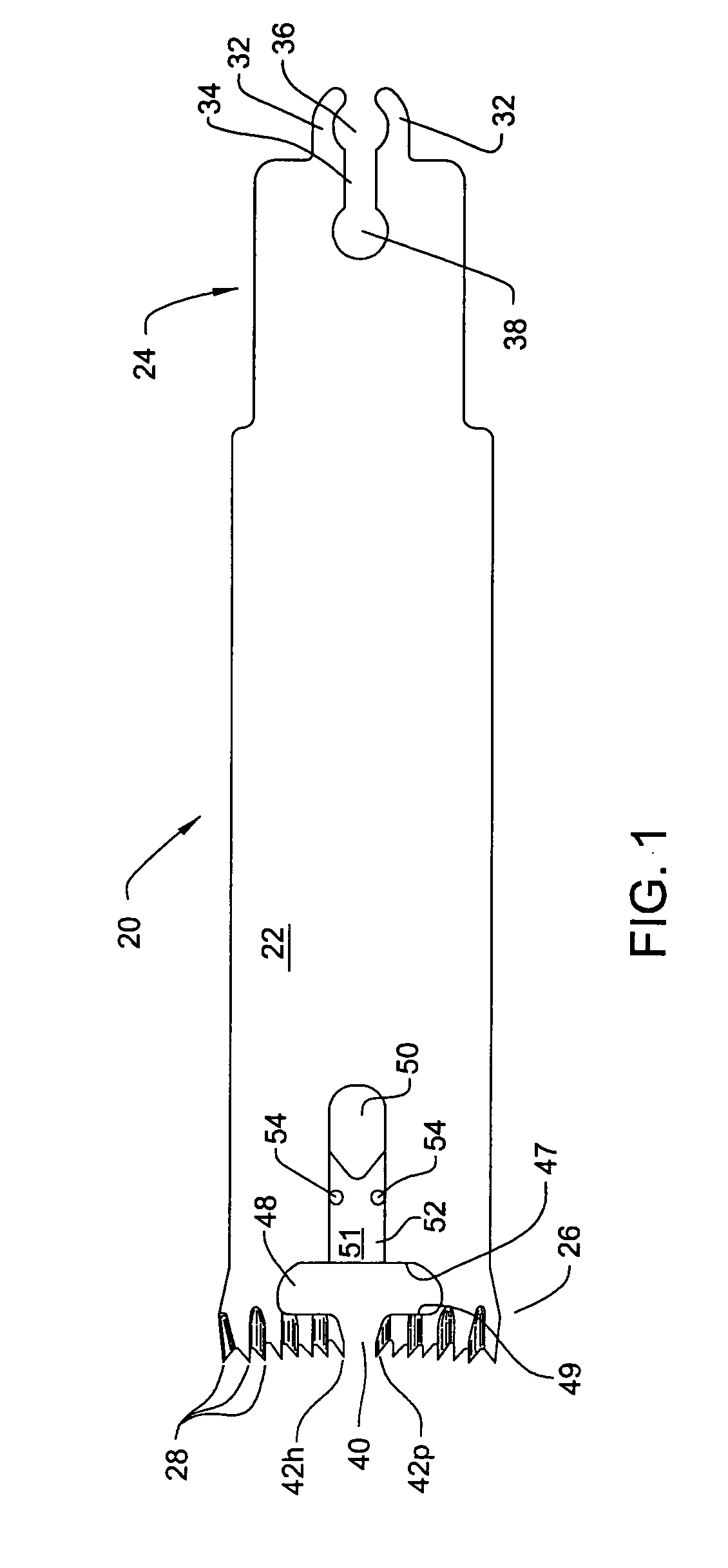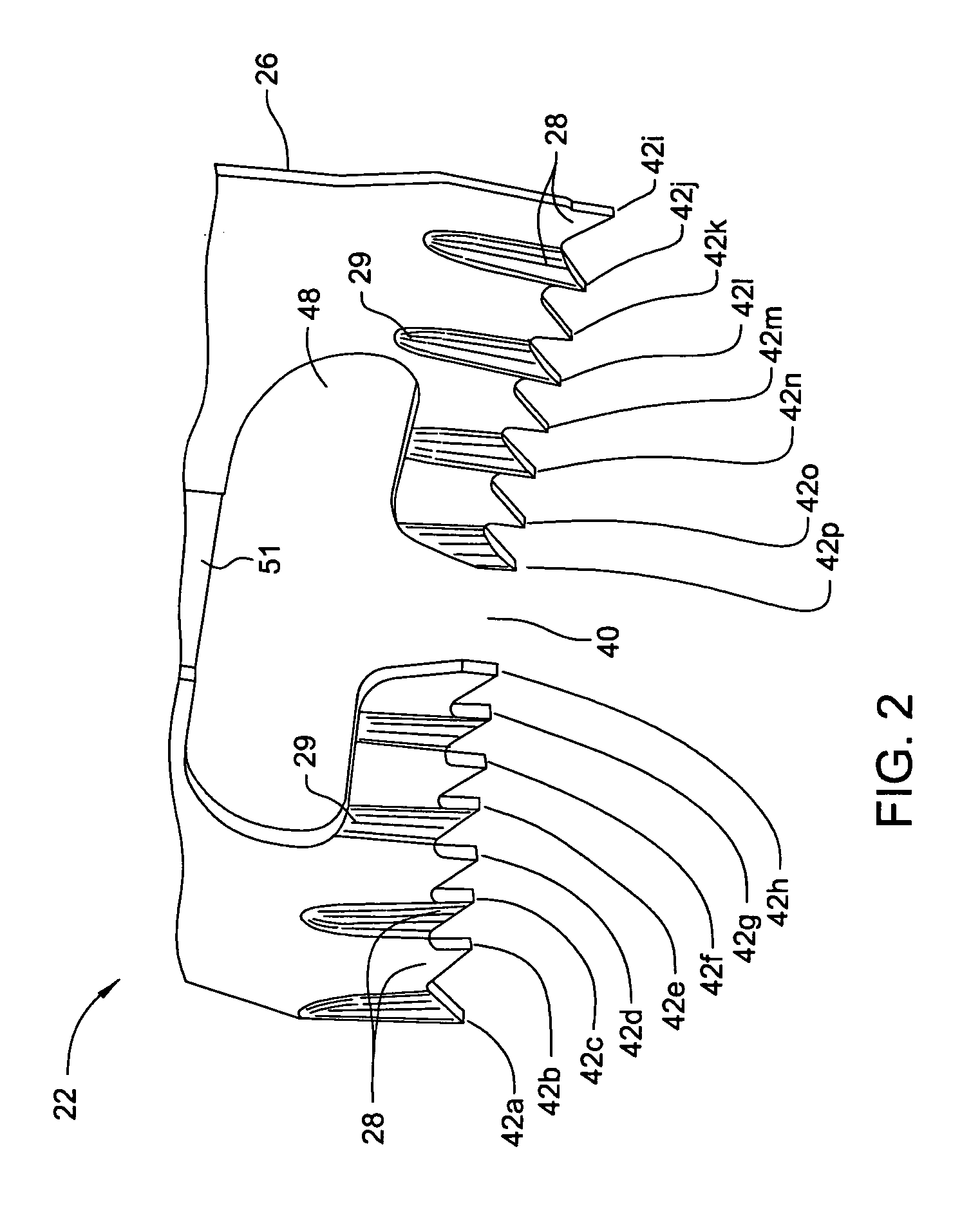Surgical sagittal saw blade with angled teeth and chip catchment and reciprocating saw blade with broached teeth
a saw blade and sagittal technology, applied in the field of surgical saw blades, can solve the problems of reducing affecting the limitations of the known varieties so as to improve the cutting efficiency of the saw blade, reduce the kick generated by the blade, and increase the blade stability
- Summary
- Abstract
- Description
- Claims
- Application Information
AI Technical Summary
Benefits of technology
Problems solved by technology
Method used
Image
Examples
Embodiment Construction
[0021]FIGS. 1 and 2 illustrate a surgical sagittal saw blade 20 constructed in accordance with this invention. Blade 20 has a planar blade body 22 formed of material such as stainless steel. Blade body 22 has opposed proximal and distal ends 24 and 26, respectively. (“Proximal” it is understood means towards the surgeon, away from the surgical site to which the blade is applied. “Distal” means away from the surgeon, towards the surgical site.) The blade is formed so that teeth 28 extend forward from the blade body distal end 26. Not identified are cuts formed in the distal end of the body 22 as a consequence of the machining of the teeth.
[0022] The blade 20 is further formed so that the body proximal end 24 is formed with geometric features that facilitate the coupling of the blade to the saw drive head that oscillates the blade. Specifically, saw blade 20 is a sagittal blade. Thus, the proximal end geometric features facilitate the coupling of the blade to a drive head that oscill...
PUM
 Login to View More
Login to View More Abstract
Description
Claims
Application Information
 Login to View More
Login to View More - R&D
- Intellectual Property
- Life Sciences
- Materials
- Tech Scout
- Unparalleled Data Quality
- Higher Quality Content
- 60% Fewer Hallucinations
Browse by: Latest US Patents, China's latest patents, Technical Efficacy Thesaurus, Application Domain, Technology Topic, Popular Technical Reports.
© 2025 PatSnap. All rights reserved.Legal|Privacy policy|Modern Slavery Act Transparency Statement|Sitemap|About US| Contact US: help@patsnap.com



